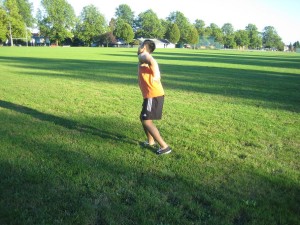Shingles or herpes zoster is brought about by the reactivation of the virus responsible for chickenpox inside the sensory nerve roots of the back and spine. The condition triggers the formation of a skin rash along with back pain that might be permanent in some individuals.
The revival of the varicella-zoster virus results to the inflammation of the sensory nerves which triggers pain that radiates from the back to the anterior part of the chest. In some individuals, the inflammation seems to sensitize the nerves, so that the pain sensations persist even after the inflammation has settled.
How long does it last?
The back pain triggered by shingles typically starts 2-3 days prior the manifestation of the one-side, blistering rash. Take note that the rash generally lasts for 7-10 days but can occasionally last for 2-4 weeks.
The back pain settles as the rash improves, excluding cases where the individual develops post-herpetic neuralgia.

Close look on back pain
The back pain brought about by shingles generally starts as a superficial, mild burning, itchiness or tingling. Once the rash arises, the discomfort typically worsens and can be severe.
The pain appears to stem from the skin and the rubbing of clothing or even a breeze is enough to instigate shooting pain that can disrupt with activities. Among those with post-herpetic neuralgia, the pain does not settle even if the rash goes away.
What are the associated signs?
The rashes triggered by shingles are described as reddened with blister-like eruptions limited to a single side of the body. Even though shingles itself is not dangerous, individuals who have post-herpetic neuralgia often suffer from sleeplessness, depression, weight loss and disability.
Management
A variety of antiviral drugs such as valacyclovir and acyclovir are given to lessen the duration and seriousness of acute shingles.
Post-herpetic neuralgia is treated using various medications including, anticonvulsants, steroids, antidepressants, topical agents and narcotics.
